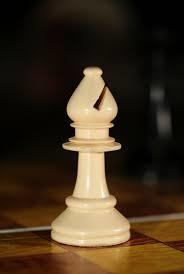The simple meaning of Hypermodern Development is “A strategy for getting all the pieces being active and dynamic in the opening that incorporates at any rate one fianchettoed bishop“. The issue is that the Alekhine’s Defense 1.e4 Nf6 is generally delegated Hypermodern despite the fact that Black doesn’t need to fianchetto. So another definition is “An initial plan that permits – however doesn’t require – the adversary to set up a major old style pawn focus and then attempts to separate it.” Both definitions are useful in comprehension Hypermodern arrangements.

Why a fianchettoed bishop? The hypermoderns (basically Richard Reti, Aron Nimzovich, and Julius Breyer) effectively contended that central control is a higher priority than central occupation. So while in traditional openings like the Giouco Piano a bishop on c4 is frequently countered by a convenient …d5, both separating the White community and assaulting the bishop, the same bishop on g2 would assault two central squares e4 and d5 enduring substantially less vulnerability.

The impact on protection to 1.d4 and 2.c4 was generally significant: the whole arrangement of Indian Defenses with 1.d4 Nf6 2.c4 came into vogue upon the Hypermodern upheaval around World War I. These incorporate fundamentally the Nimzo-Indian, Queen’s Indian, King’s Indian, Gruenfeld, and Benoni.

A basic case of a Hypermodern opening is the King’s Indian Attack System for White which quite often, by definition, includes the accompanying five moves (White’s moves only):
The old main line of the Gruenfeld is a terrific example of a Classical Development for White, with Black using Hypermodern play to counter:
A striking example is the Classic Four Pawn Attack against the King’s Indian Defense (or Benoni):
One very good reason I wanted to mention this topic is that in order to understand chess theory, you should study chess history via famous games in players in the order in which chess evolved. The reason is that the evolution of chess theory is strikingly similar to the order in which individuals learn more and more sophisticated strategies in their personal play.
Thus first you would study the Classic, pre-Hypermodern players like Morphy, Steinitz, Tchigorin, Pillsbury, Lasker, Tarrasch, Marshall, Rubinstein, and Capablanca.

Young Capablanca next to a chess board
Then you would move onto Hypermoderns: Reti, Nimzovich, and Breyer (who unfortunately died young in World War 1)

A jovial Richard Reti
Third you would study games of the pre-World War II players who amalgamated those theories, such as Alekhine, Botvinnik, Euwe, Fine, Keres, Boleslavsky, and Reshevsky. Finally you could enjoy and learn from the many, many modern players who brought these theories into modern perspective. Too many to name, but for opening theory let me try Smyslov, Najdorf, Uhlmann, Fischer, Suttles, Larsen, Geller, Polugaevsky, Sveshnikov, Kramnik, and many more.

A classic mikhail botvinnik
If an advanced player who is 2200+ is reading this article. I more than welcome you to analyse computer championship games. For example, Stockfish vs Alphazero or Houdini vs Fritz. These are incredibly complex and use neural networks and processed algorithms. You also cannot analyse these with an engine as they are engines playing against themselves and the opinion cannot be reached upon unanimously.

So it would be better if you form a group with advanced players in your chess club and you split the duties and responsibilities of analysing to get an efficient result. You take the number of moves in the game and quickly browse through the game and mark points where the game transitions from openings to middlegame and middlegames to endgames. Like if it’s a group of 50 people, 2-5 people can analyse the opening in depth, 20 people should properly cover the middlegame, 20-25 people should properly cover the endgame. This will allow you to sense how advanced computers are and will allow you some novel ideas and tactics (like the recent h4-h5 push by Alphazero). These should only be done if you have a rating of 2200 + or are advanced enough. Also, most of the human games should be covered and analysed.

This article was meant as a preface to understand my future upcoming articles and also because many people on instagram DMing me (you can go to it over to cover hypermordern theory with some games. I wanted all of you to get a general idea and I hope that you’ll be able to understand my future articles.
Happy Learning,
Yash Mehta





0 Comments